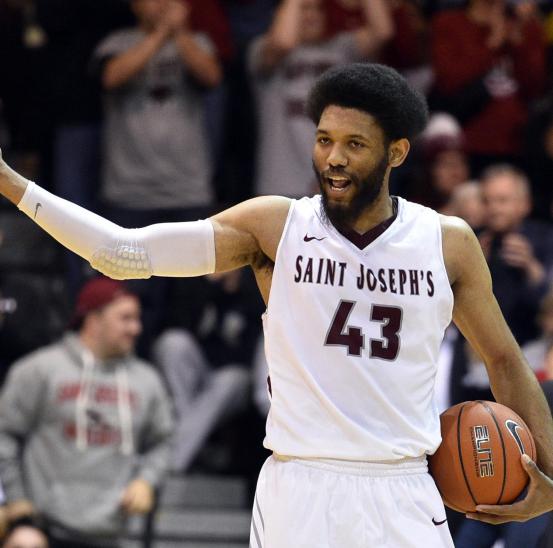- Commissioner’s statement on Ventura, Marte
- Ronnie O’Sullivan: Masters champion ‘felt so vulnerable’ in final
- Arron Fletcher Wins 2017 WSOP International Circuit Marrakech Main Event ($140,224)
- Smith challenges Warner to go big in India
- Moncada No. 1 on MLB Pipeline’s Top 10 2B Prospects list
- Braves land 2 on MLB Pipeline’s Top 10 2B Prospects list
- Kingery makes MLB Pipeline’s Top 10 2B Prospects list
- New Zealand wrap up 2-0 after Bangladesh implosion
- Mathews, Pradeep, Gunathilaka to return to Sri Lanka
- Elliott hopes for rain for Poli
Can DeAndre’ Bembry Prove He’s the Next Jimmy Butler at 2016 NBA Combine?
- Updated: May 8, 2016

The story is the stuff of Midwestern legend by now: Jimmy Butler—hardly an exciting college or pro prospect coming out of Marquette—goes No. 30 overall in the 2011 NBA draft, a shock to most, including Butler himself.
“I was speechless and couldn’t say anything,” Butler told Marquette’s official website. “I had to just walk outside and try to compose myself.”
The shock was easy to understand if you paid attention to that season’s mock drafts.
ESPN.com called him a potential second-round pick prior to the draft. After an MVP showing at the Portsmouth Invitational—a senior-only showcase tournament in April—ESPN barely upgraded his outlook. In a report from Portsmouth back in 2011, NBADraft.net’s Borko Popic highlighted the obvious concern:
His handle gets sloppy and definitely needs work, but the big question mark about his game is his ability to knock down the NBA range three pointer. His form breaks down a bit when he shoots from longer range, and it does not look the same as when he shoots from midrange. He certainly shares some traits with guys like Landry Fields and Wesley Matthews, but for him to stick around at the next level he will need to continue extending his range.
Butler only hit 36 total threes in three seasons at Marquette and never averaged more than 0.5 per game despite playing at least 33 minutes per night during each of his last two years. Back in 2011, pegging him as an All-Star who could average 20 points and shoot 38.7 percent from three—as he did in the 2014-15 season—would have sounded ridiculous.
The two-time All-Star is now widely considered one of the best two-way wings in the NBA.
That brings us to Saint Joseph’s DeAndre’ Bembry, another wing whose predraft resume and profile should now sound familiar.
An unheralded recruit out of The Patrick School in New Jersey, Bembry didn’t hit the radar until late in his freshman year of college.
“I played with a couple guys who ended up going pro, and they heard a couple of people saying the NBA guys are looking at you,” Bembry told Bleacher Report. “I’m like, ‘Alright now.'”
But after a pair of productive seasons to close out his college career, the NBA buzz never got loud. Like Butler, the specific statistical strides didn’t happen, and scouts noticed.
This week at the 2016 NBA Draft Combine in Chicago, Bembry will have a chance to reclaim the buzz and prove that a dip in his shooting percentage was an aberration—merely a function of added volume and the target on his back from opposing defenses.
“My points stayed around the same; assists went up, rebounds up, but my shooting went down,” said Bembry. “It went down every year. That was probably my main focus, me trying to get my jump shot better. But my percentage actually went down.”
After three years of Division I ball, Bembry failed to close a significant hole in his game. Just like Butler.
An Unconvincing Shooter
Before this season, Bembry’s freshman three-point percentage had fallen from 34.6 percent to 32.7 percent as a sophomore. In 2015-16, he shot 26.6 percent from three and was below 70 percent at the line for the third consecutive season.
“His stroke isn’t bad, …
continue reading in source www.bleacherreport.com
